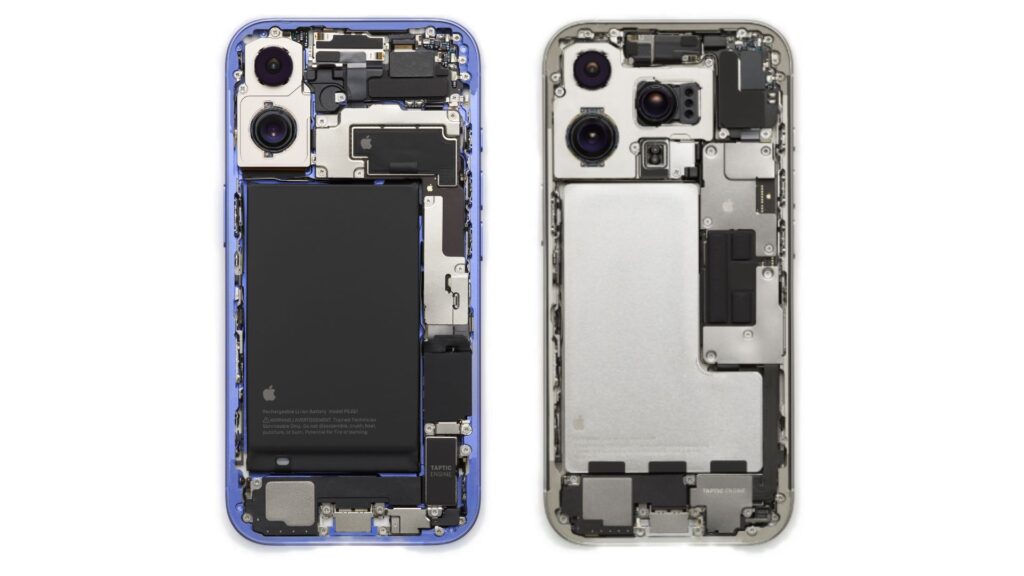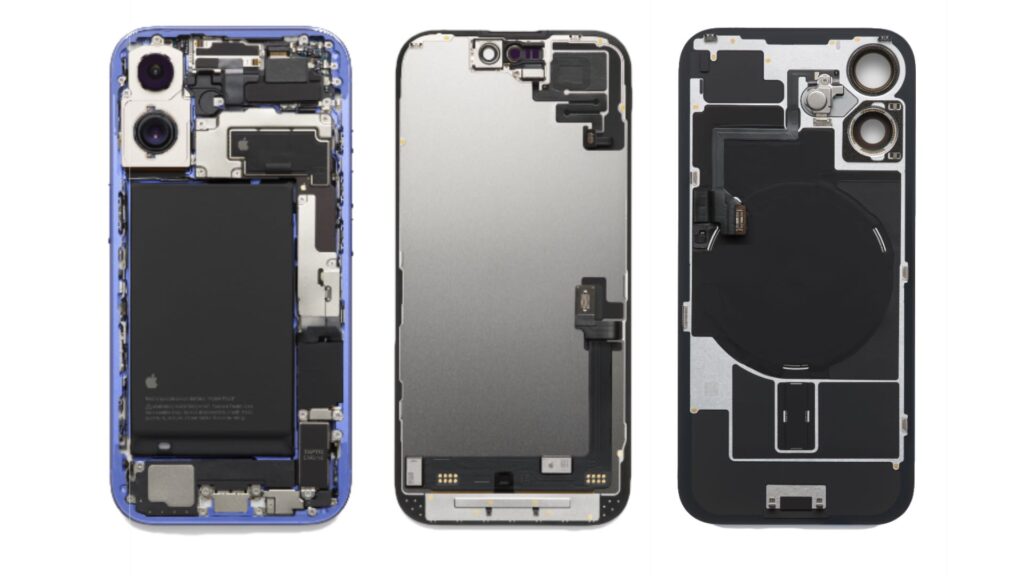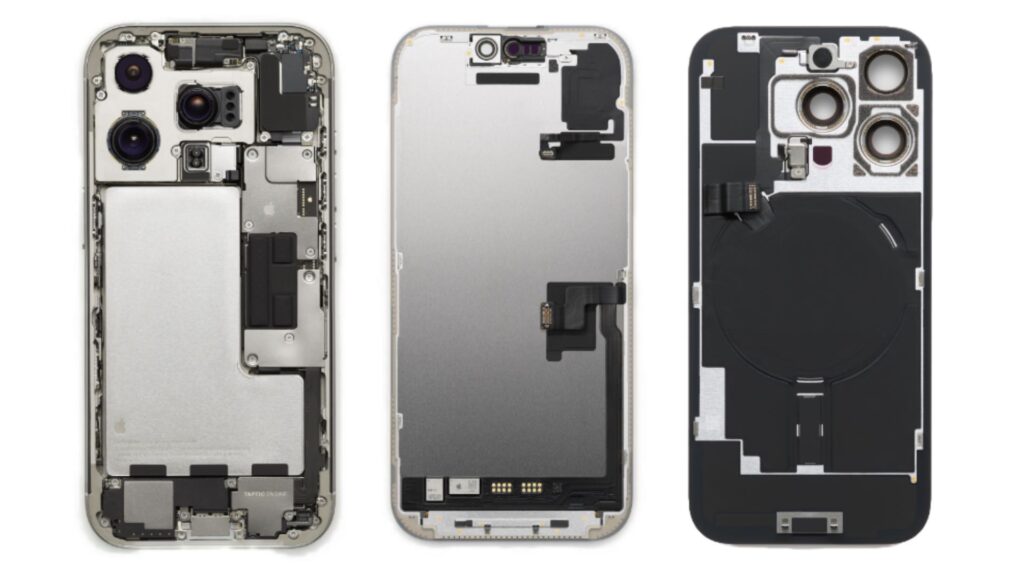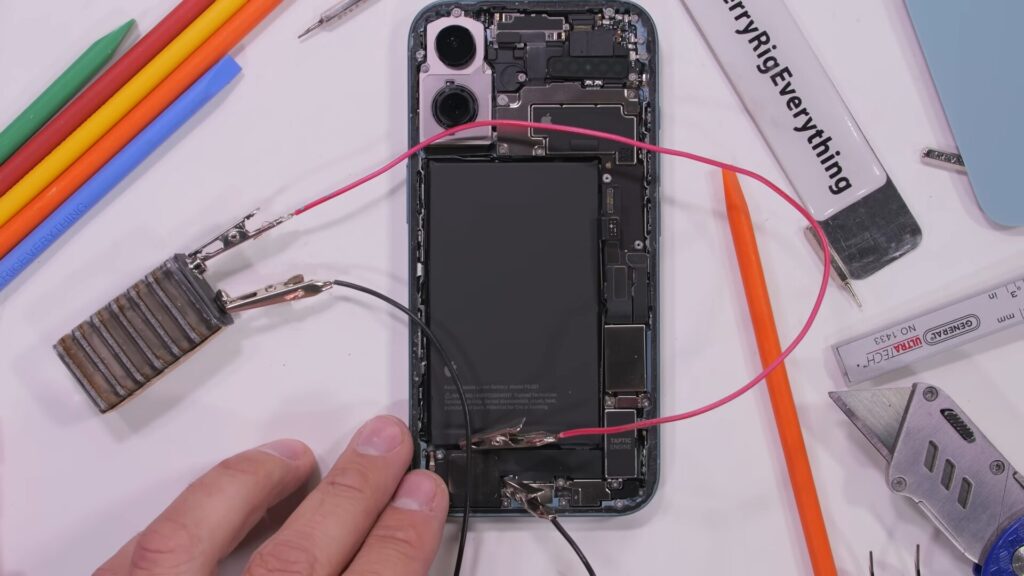Exclusive. Usually adept at absolute secrecy regarding the design of its products, Apple has agreed to show Numerama the changes made to the iPhone 16 range, which have notably made it possible to drastically reduce overheating. Richard Dinh, vice president of iPhone design, and Francesca Sweet, director of iPhone marketing, answered our questions.
Since the iPhone 12, the design of the most famous smartphone on the planet has changed very little. The years go by and the iPhones look the same, to the point of making evil tongues say that Apple no longer knows how to innovate.
In reality, beneath the guts of the iPhone, there are differences every year. The iPhone 16 range, despite the timidity of its new features, is perhaps the one that has changed the most things inside. One of the big projects of the 2024 vintage specifically concerns heating, a problem which had become important with the iPhone 14 and iPhone 15. The brand changed the location of several components so that the heat dissipates better, which was greatly appreciated in our iPhone 16 Pro Max review. This new generation is also testing a metal battery, as well as several innovations to facilitate smartphone repair.
« Maximize thermal performance »: Apple explains how it lowered the temperature
The iPhone 16 and iPhone 16 Pro have one thing in common: they heat up much less than their predecessors. A change that makes it possible to obtain “consistent 30% higher performance” depending on the brand, which means that these devices are much less subject to loss of brightness or speed when they are overused. The change is particularly felt in the hand: the iPhone 16s are less hot than the iPhone 15s.
How did Apple do it? Strangely, its designers used two different processes between the iPhone 16 and 16 Pro. On standard smartphones, the brand has redeveloped certain internal components such as the phone’s processor: “With the new central position of the A18 chip and power management unit, it’s a better starting point for heat dissipation. It is more uniform across the product”explains Richard Dinh.
On the iPhone 16 Pro, it’s the exterior that changes: “We maximize thermal performance with a new extruded and precision-machined chassis, made from 100% recycled aluminum, laser welded to the titanium frame », Adds the vice-president of design, handling a stripped iPhone to show us the graphite present on the device. The gap is smaller between the 15 Pro and the 16 Pro (20%) than between the 15 and the 16 (30%).

“The iPhone 16 features a new graphite cloud substructure behind the rear glass which, along with the central chip position, improves heat dissipation”
Richard Dinh, Apple vice president of design
Are iPhone 16s cooler? It’s just an impression, explains Richard Dinh: “Our goal is that the heat distribution is uniform, and so you don’t feel a spot that will be hotter”. What has changed in 2024 is not the temperature of the chip, but the distribution of heat all around the phone. In the past, the back of the device was particularly hot. Today, the entire device heats the same way, which reduces the feeling of holding a hot water bottle.
Why make these changes now? Officially, and unsurprisingly, Apple does not recognize any problems with the previous range. Francesca Sweet links this novelty to the arrival of artificial intelligence, which needs a lot of power: “We run computationally intensive tasks to run these large generative models” explains the iPhone marketing director. Richard Dinh adds “A lot of this is due to the new thermal design”. “That’s the beauty of Apple. The fact that we have the hardware team sitting next to the software team, with the processor teams next to it. We are really designing this system collectively,” specifies the marketing director.


What about solutions used by competitors like Samsung, such as liquid cooling? Richard Dinh indicates that Apple is interested in it, but that he preferred to make a different choice for this product. “When we find a good solution that fits and solves the goals we have for a product, we adopt it.”
A battery to remove the battery: the hidden innovation of the iPhone 16
During the first “teardowns” of the new iPhones, several specialist sites pointed out a surprising change which only concerns one device: the iPhone 16 Pro. The battery, usually black and plastic, is now covered in metal. A characteristic not shared by the iPhone 16 Pro Max, iPhone 16 and iPhone 16 Plus, which retain old-style batteries.
“The iPhone 16 Pro battery introduces a new design with cells encased in metal. This design gives us more precision, meaning we can pack even more active material into the battery. It increases energy density” explains Richard Dinh. The designer notably highlights a “new power management system” which allows, when the device is on the mains, “to intelligently predict whether you need to prioritize the load” or local performances.
Why reserve it for the iPhone 16 Pro? There are two hypotheses:
- It’s a question of possibilities at the moment, with undoubtedly an iPhone 17 Pro Max which will inherit it in 2025.
- The arrival of the x5 zoom on the small iPhone 16 Pro forced Apple to reorganize the space: “The iPhone 16 Pro with the new 5x larger zoom, we had to push the battery to get there”recognizes the designer.


Another new feature of this new generation: the battery is no longer stuck.
When you remove the back of the device, it is still impossible to remove the battery with your fingers. But the big new thing for 2024 is the possibility of detaching it with a simple battery: “iPhone 16 features an all-new process for removing the battery from the case by simply applying voltage from a 9-volt household battery to our new adhesive” explains Richard Dihn.
How does it work? “There is a special ionic liquid that works to release the battery from the case”. A repairman, with a battery and two wires, can therefore remove a battery in a few seconds. Just “to short-circuit” the battery with a household battery so that it stops sticking. An operation technically possible at home, even if the iPhone remains designed for repairs by professionals.


The art of changing little things
Contrary to popular belief, there are many changes from one year to the next, since it requires completely reviewing the manufacturing process of an iPhone. “We may have a different opinion on what we think is most important to a client, and that’s usually what we debate” analyzes Francesca Sweet, when asked about what leads Apple to make a change or not to make one.
With the iPhone 16, there are changes people see and changes they don’t. Richard Dinh gives the example of the vertical repositioning of the camera module, which is officially due to taking space photos.
“By repositioning the ultra-wide-angle camera in an arrangement that mimics human binocular vision, we improve power efficiency for any camera experience that uses depth data or spatial fields,” explains the designer. The iPhone captures depth information more easily and therefore uses less power to measure distance. The reduction in screen borders is also explained by new technology, with hidden electrical circuits, directly integrated into the screen. The gap is only a few millimeters, but the industrial process is very different.
“These little details”as Francesca Sweet calls them, explain why Apple can appear to be moving slowly, when it’s actually making great progress year over year. No brand places as much importance on internal design, even though almost all users will never see it.
Source: www.numerama.com


